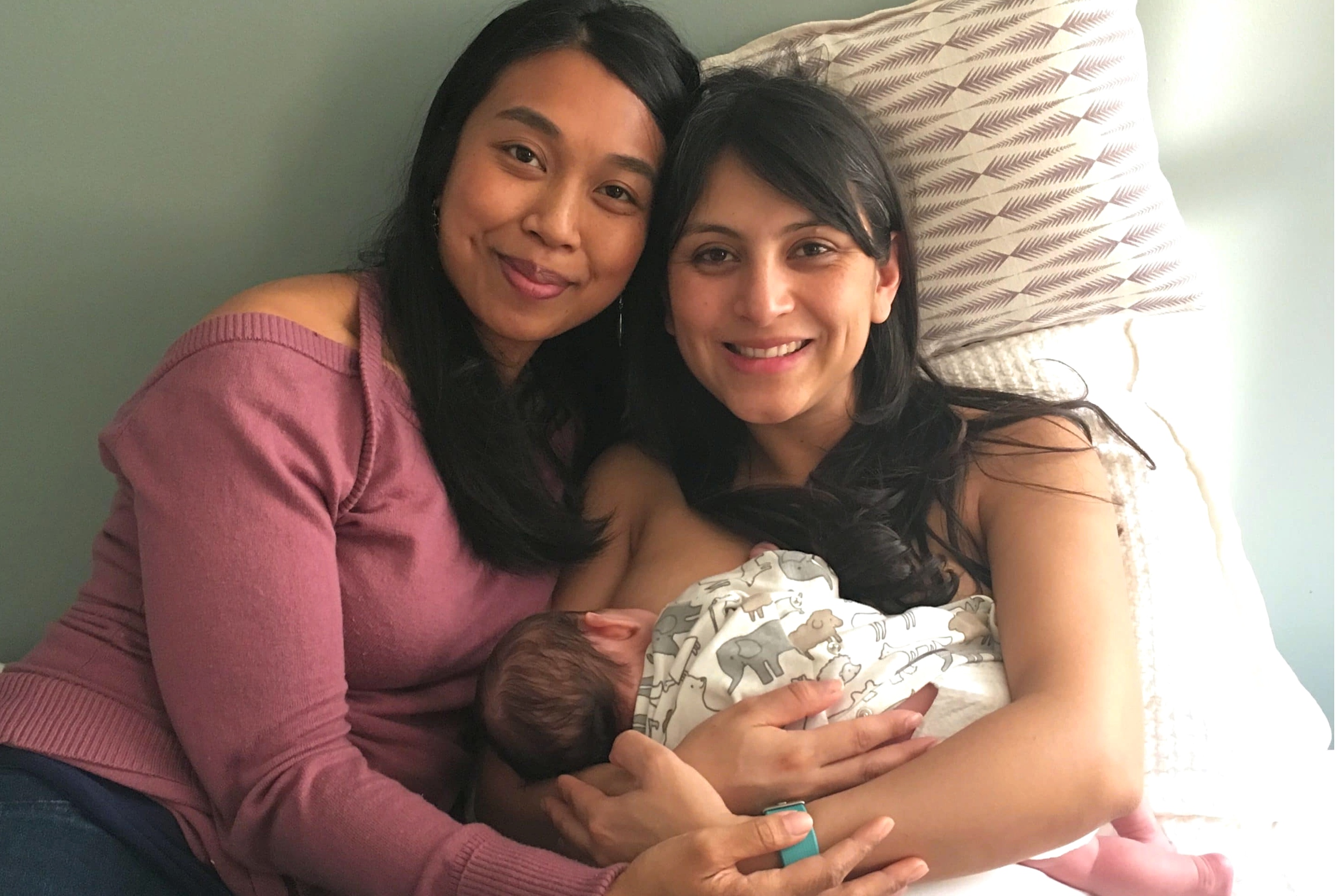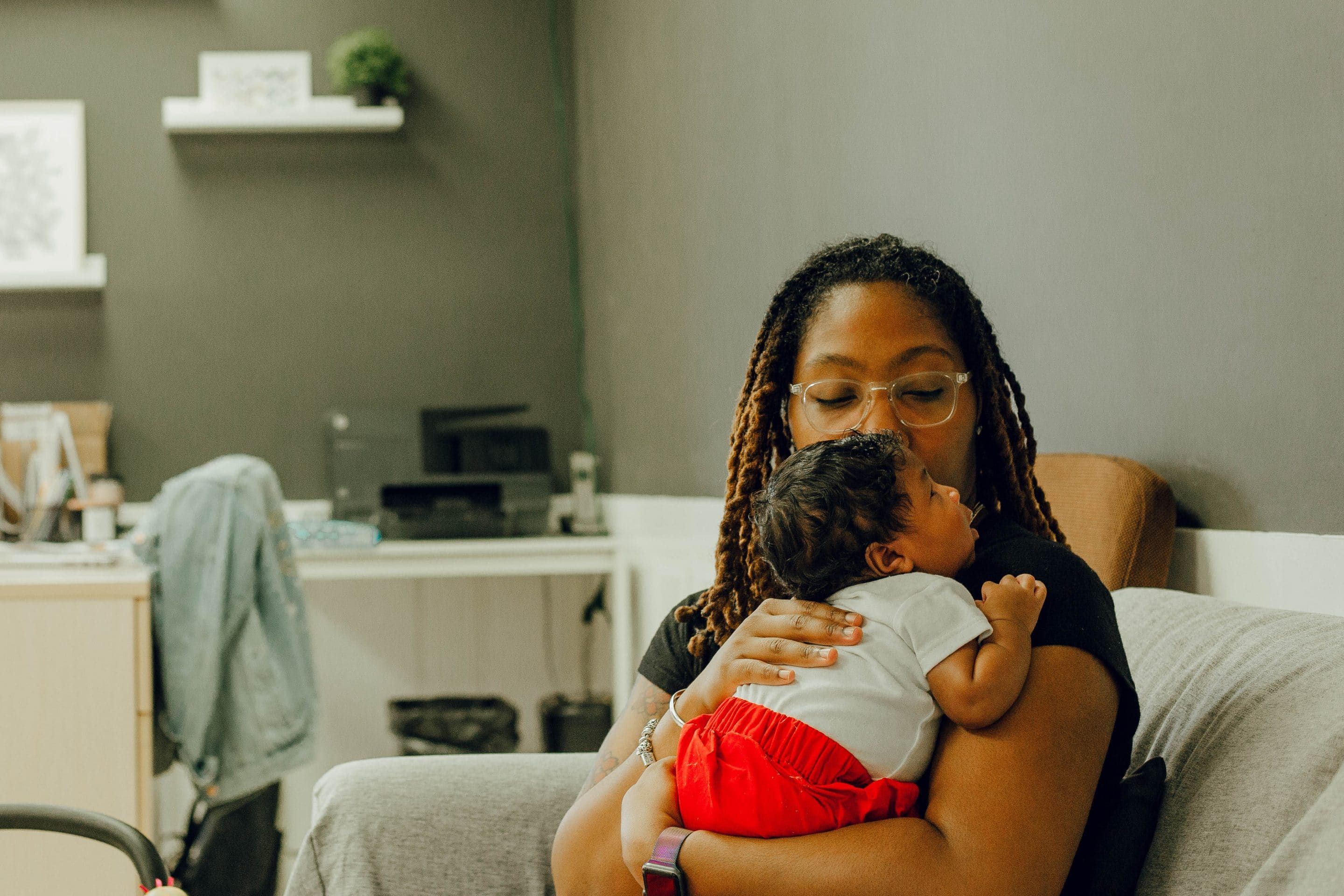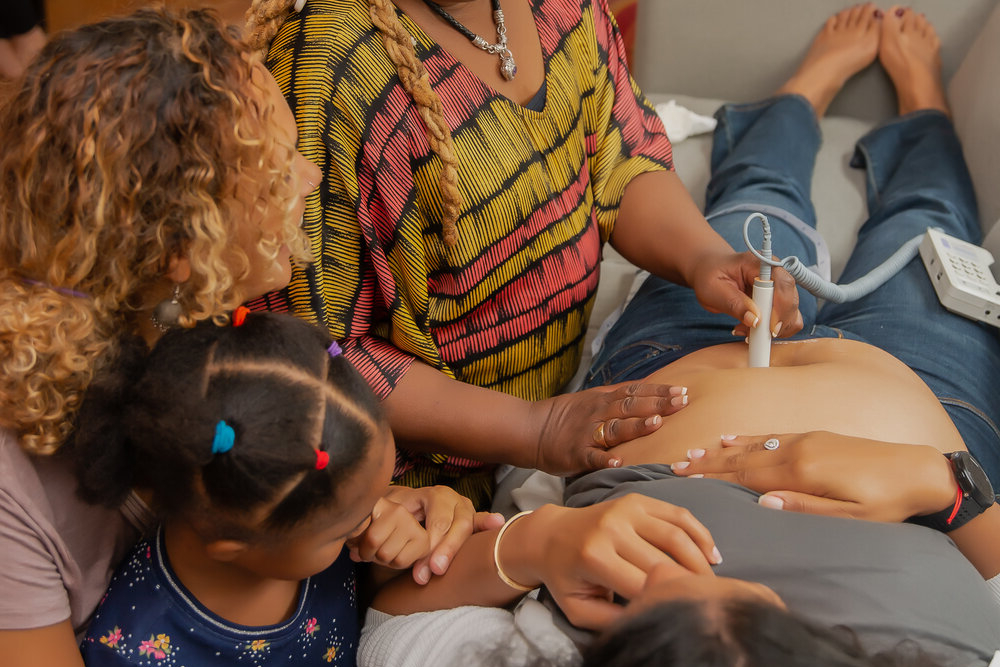About
Learn about our story, mission, and values.
Birth Center Equity was created to make birth center care an option in every community, by growing and sustaining birth centers led by Black, Indigenous, and people of color (BIPOC).
We envision a world where every community has access to a birth center.

BCE Values
Safety – All Black, Indigenous, people of color deserve safe birth spaces and safe birth care, as well as safe spaces that support our growth, leadership, and relationships. Ensuring our safety includes healing and reparation of harm and inequity in maternal health practices, structures and systems (including inequitable access to capital) that have oppressed our communities. Ensuring our safety also includes healing and reparation within our networks and organizations and treating one another with respect, grace, and kindness.
Abundance – With trusted relationships and solidarity come abundant resources to grow and sustain Black, Indigenous, and People of Color community-owned and led birth infrastructure, and realize beloved economy. Beloved economy rejects scarcity, supremacy and resource hoarding; and instead centers care, liberatory relationships, abundance, community wealth and power building.
Liberation – Safe, loving, and liberatory birth for all birthing people is essential to racial, gender, and reproductive justice. BCE honors the human right to bodily autonomy, to have and to not have children, to parent in a safe, healthy, nonviolent environment, and the rights to self-definition and sexual freedom. (See Sister Song Reproductive Justice declaration.) We believe that leading together in our own care is an act of liberation, and that honoring birth as a chosen sacred transformative experience at every level (individual, organization, community, culture) will transform birth culture for all.
Our Story
These callers, often people far along in their pregnancies, were seeking a safe place to give birth, somewhere that was not a hospital overwhelmed with COVID-19. What they sought was the safety of a community birth center, a homelike facility where prenatal, labor, birth, and postpartum care is provided in the midwifery and wellness model, and birthing people are supported to make informed decisions about how and where they birth.
The urgency and opportunity of the pandemic led Leseliey and Nashira to create Birth Center Equity as a channel for resources to increase access to community birth center care during COVID-19, and to create vibrant lasting community birth center infrastructure across the country.

Our Impact. From 2020-2024

- BCE invested more than $5M in community birth infrastructure funding and capacity building, with $3.1M in direct financial distributions to Black, Indigenous, people of color-led birth centers.
- The BCE Network grew by 300% – from 14 community birth centers to 58. Of these 58 centers, 20 are established centers with on-site birthing services, while 38 are developing centers seeking resources to open on-site birthing services.
- BCE helped increase the proportion of all established US birth centers that are led by Black, Indigenous, people of color – from 5% to 7%.
For more about BCE’s impact, please click here to read our Impact Reports.
Select Writings by BCE Leaders (2020-2025)
2024
- Birth Centers Are Public Health, Birth Center Equity, September 2024.
- Growing A Beloved Birth Culture, Leseliey Welch, Aspen Institute Ascend Stories, Spring 2024.
2023
- Birthing Black: Community Birth Centers as Portals to Gentle Futures by Leseliey Welch and Nashira Baril, Nonprofit Quarterly, January 2023.
2022
- “We are no longer asking permission to save our own lives: Black-led birth centers to address health inequities.” by Leseliey Welch, Renee Branch Canady, Chelsea Harmell, Nicole White, Snow, Char’ly Snow, and Lisa Kane Low, Journal of Perinatal Nursing, Spring 2022.
- Improving Our Maternity Care Now Through Community Birth Settings Report. Co-released with National Partnership for Women and Families, 2022. Summarizes the evidence to support birth centers as a high-value model of care and crucial approach to meeting the needs of communities impacted by structural racism. “How Racism Undermined Midwifery,” page 4, by Julie Quiroz.
2020
- Birth Centers are Crucial for Communities of Color, Especially in a Pandemic, by Leseliey Welch and Nashira Baril, Rewire News, April 2020.
Watch the Video
Understanding Birth Center Equity
Birth and perinatal health disparities in communities of color are facts we know all too well. But we also know what to do to change this.
We know that midwifery care – nurtured and sustained with community birth center infrastructure – is the solution to a failing US birth care system. Midwives are healthcare professionals who provide expert care, support, and guidance during pregnancy, birth, postpartum, and throughout our reproductive lives. Birth centers are the only healthcare facilities designed to center the midwifery model of care, and access to birth centers is limited. Research shows that midwifery care improves birth outcomes, enhances the care experience, is cost effective, and reduces inequities. Yet, in the US, only 15% of birthing families have access to midwifery care.
It is estimated that 60% of US pregnancies are low-risk and could be safely supported by midwives. In countries with better birth outcomes than the US, like France, the United Kingdom, the Netherlands, and Japan, 75% of pregnancies are supported by midwives.
How Racism Undermined Midwifery*
“Today’s lack of access to midwifery and to community birth in the U.S. is rooted in racism. At the turn of the 20th century, midwives attended the births of half of all the babies born in the US. Most Black midwives (known as ‘Grannies’ or ‘Granny-midwives’ in the South) received their training through apprenticeships. In many areas of the country, physicians working in hospitals largely displaced midwives, as women were told that hospital births were more ‘modern’ and ‘advanced.”
“National legislation played a large role in the decline of mid-wifery:
The Sheppard-Towner Act of 1921 supported prenatal and children’s health centers. The act established public health nurse supervision, training and oversight of traditional midwives, which discouraged the practice of midwifery, particularly Black midwifery. Biased views held that the midwives were too uneducated and unclean and too involved with cultural practices to provide optimal maternity care.
While midwifery practice and community standing declined among all mid-wives, Sheppard-Towner especially targeted Black midwives.”
“The effects were severe. For example, in 1920, there were 5,000 Black midwives in Georgia alone, but by 2002, the state had just 15 practicing Black midwives; and in 2020, seven percent of midwives certified by the American Midwifery Certification Board identified as Black or African American, in contrast to 16 percent of childbearing women. By the 1930s and 1940s, primarily affluent white male physicians with standardized curricula, formal credentials, authority to self-regulate, and hospital-based practice came to predominate as maternity care providers.”
“Indigenous midwives have also faced a pattern of racialized barriers to practice. Over the course of a century and in the name of ‘safety’, state and federal legislation has forced Indigenous midwives to assimilate into the predominant under-resourced and underperforming medical system. Indigenous midwives and their longstanding traditions as well as the communities they serve have been adversely affected.
Many Indigenous people now live in communities designated as workforce shortage areas.”
*Excerpts from “How Racism Undermined Midwifery”, Improving Our Maternity Care Now Through Community Birth Settings Report, 2022.

Because birth centers are based in the midwifery model of care, they lessen rates of preterm birth and low-birth weight, reduce cesarean usage, improve breastfeeding rates, lower health care system costs, and ensure families feel seen and heard and have a foundation on which to raise healthy thriving children.
Moreover, birth centers led by Black, Indigenous, people of color are:
- A key solution to reversing the perinatal health crisis by providing safe and culturally reverent care in communities of color
- A crucial part of a vibrant health care system.
- Vital infrastructure to increase access to midwifery education, training, and practice by Black, Indigenous, people of color, which strengthens the field overall.
- Community institutions that create healing for generations.
Our country’s history of racially unjust wealth distribution means people of color lack access to the capital needed to start birth centers in their communities. More than 80 percent of birth centers are for-profit entities that were started through owners’ personal savings, loans, or family gifts. (Source: American Association of Birth Centers). In 2020, when BCE began, we discovered that no data was collected regarding the number of birth centers led by people or color – so we collected the data ourselves. In 2020, an estimated 5 percent of birth centers were led by people of color. While BCE is proud to have been part of growing this proportion to 7 percent in 2024,these data make clear that the need for birth centers in communities of color far outstrips the availability.
Racial inequity is a major barrier to community birth center access. This is why BCE specifically focuses on birth centers led by (not just serving) Black, Indigenous, people of color, to address the structural inequities in access to midwifery education and access to the capital to finance birth centers. With a midwifery workforce that is 95% white, Black, Indigenous, and Person of Color-led birth centers provide vital infrastructure for the education, training, and practice for midwives and birth workers of color.
At a time when disparities in birth and perinatal care persist in communities of color, and an increasing number of perinatal clinics and labor and delivery hospitals close, access to community-based midwifery care is more important than ever. Community birth centers led by Black, Indigenous, people of color are answering this call, organizing to meet community needs for safe, high-quality, culturally-reverent prenatal, postpartum and birth care.
Our health-care system was not designed with equity at the center—in fact, it was originally designed to the full exclusion of Black, Indigenous, people of color. By contrast, community birth centers are designed to reflect the stories and dreams that the larger health system has ignored, and heal the frustrations and traumas of people and families who have not been centered in the design of health-care spaces.
Using evidence-based models of care and trained professionals, we can increase safe birth options for all our children and grandchildren. Today’s babies—and tomorrow’s generations—cannot wait.
